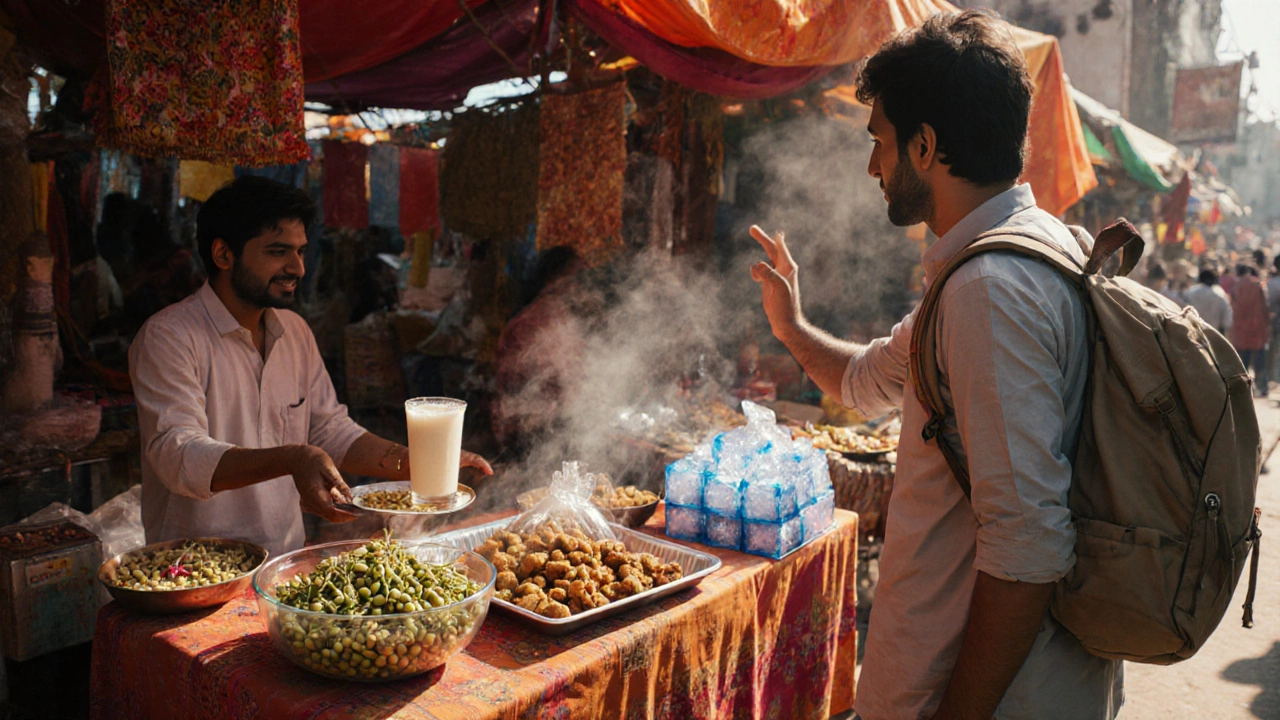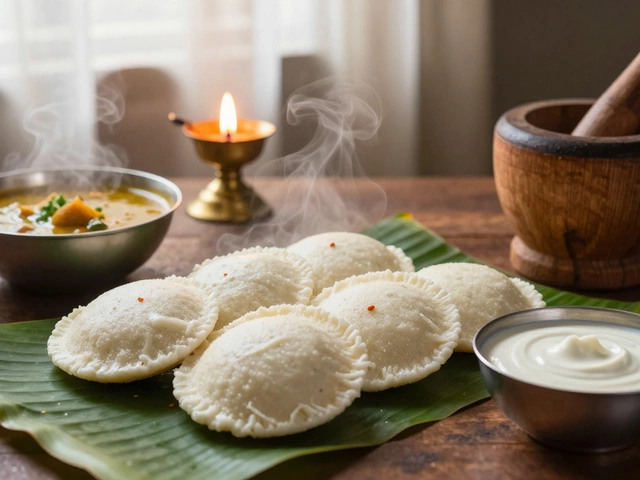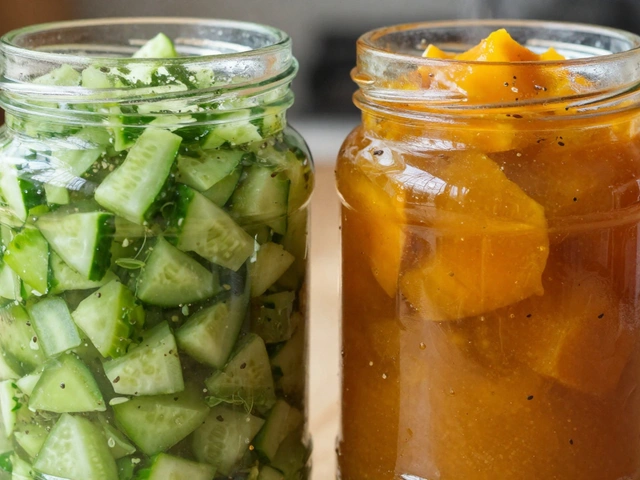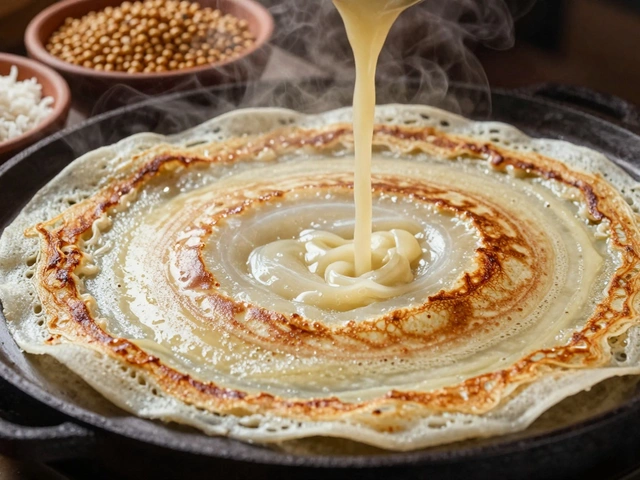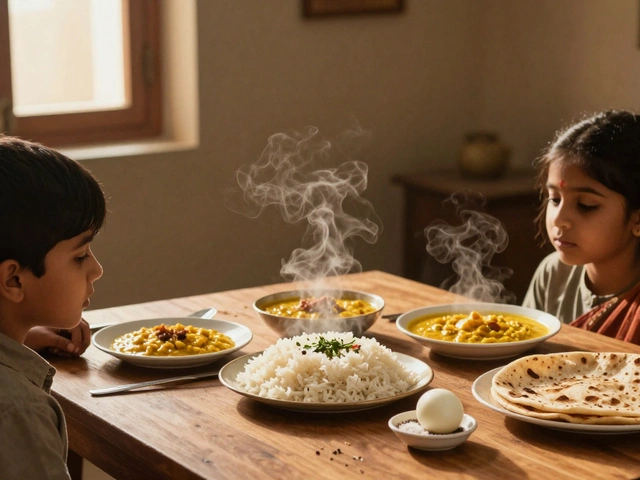India Street Food Safety Checker
Check Food Safety
Enter any street food item to see if it's safe to eat in India based on food safety guidelines for travelers.
Traveling through India is a feast for the senses, but the excitement of street stalls and bustling markets can hide hidden health risks. Knowing which dishes pose a danger can keep your trip flavorful and illness‑free. Below is a practical, no‑fluff guide that tells you exactly what to skip and how to spot safe options.
Foods to Avoid in India are specific dishes or ingredients that commonly cause food‑borne illness for travelers due to poor hygiene, improper cooking, or unsafe sourcing.Why Food Safety Matters in India
India’s climate, massive population, and vibrant street‑food culture create a perfect storm for bacterial growth. Studies from the Indian Council of Medical Research show that up to 30% of travelers experience gastrointestinal upset within two weeks of arrival, often linked to contaminated food or water. Understanding the underlying hazards helps you make smarter choices on the go.
Common Food Hazards You’ll Encounter
Four main threats show up repeatedly across the subcontinent:
- Waterborne Pathogens: E. coli, Salmonella, and Vibrio cholerae thrive in untreated water and can contaminate anything that’s washed or soaked in it.
- Bacterial Contamination: Improperly cooked meats, especially poultry and pork, can harbor Salmonella or Campylobacter.
- Cross‑Contamination: Cutting boards or utensils used for raw meat and then for fresh veggies spread germs instantly.
- Improper Food Storage: Curries or soups left at room temperature for hours create an ideal breeding ground for Staphylococcus aureus and botulism toxins.
These risks are amplified in street‑food settings where infrastructure may lack reliable refrigeration or clean water supplies.
Top 10 Foods to Avoid (and What to Choose Instead)
- Raw Sprouts (Moong Bean Sprouts) - Often served in chaat or salads, sprouts are grown in warm, moist conditions that encourage bacterial growth. Choose cooked bean dishes like dal or roasted chana instead.
- Unpasteurized Lassi or Yogurt Drinks - Fresh dairy from informal stalls can contain Listeria. Opt for bottled, sealed yogurt drinks that display a reputable brand logo.
- Street‑Sold Ice - Ice cubes made from tap water are a common vector for E. coli. Skip icy drinks or ask for drinks shaken with fresh, boiled water.
- Open‑Container Coconut Water - Vendors often fill open containers from a single coconut, risking contamination. Buy sealed, commercially packaged coconut water.
- Fried Foods Cooked in Re‑used Oil - Repeated heating breaks down oil, creating harmful compounds and increasing the chance of cross‑contamination. Look for stalls that fry on‑the‑spot with fresh oil.
- Seafood Served Raw or Undercooked - Street stalls in coastal towns may offer raw fish or shrimp salads. Choose grilled or well‑cooked seafood instead.
- Mayonnaise‑Based Sauces - Homemade mayo made with raw egg can carry Salmonella. Stick to chutneys or tomato‑based sauces that are cooked.
- Uncooked Fruit Served with Hand‑Torn Leaves - Fruit cut on a dirty surface and served with leaves that have touched the ground can be a contamination source. Peel fruit yourself or buy pre‑packed fruit.
- Leftover Curry Served Cold - Curries that have been sitting out for hours without reheating are breeding grounds for toxins. Order fresh, hot portions or ask for the dish to be reheated.
- Street‑Made Paneer or Cheese - Homemade cheese without proper acidification can harbor pathogens. Choose store‑bought paneer with clear packaging.
Skipping these items drastically reduces your odds of a stomach‑upset while still letting you taste authentic flavors.
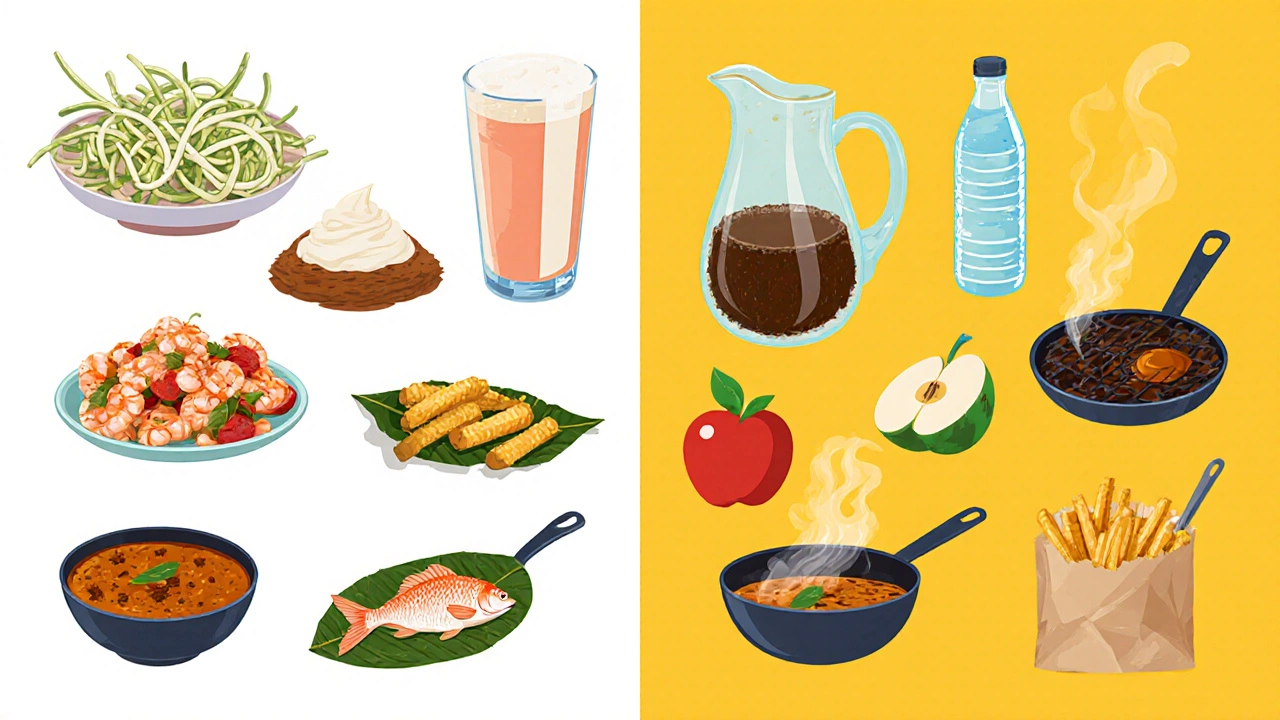
How to Spot Safe Street Stalls
Even in chaotic markets, a few visual cues can tell you a vendor follows decent hygiene practices:
- FSSAI Certification: Look for a small sticker or sign displaying the Food Safety and Standards Authority of India (FSSAI) logo. It indicates the stall has passed basic safety checks.
- Clean Water Source: Vendors who pour water from a covered, boiled container or use a filtered dispenser are less likely to spread waterborne pathogens.
- Cooking to Order: Food that is prepared or heated in front of you reduces the chance of cross‑contamination.
- Visible Hygiene Rating: Some cities display a color‑coded rating (green, yellow, red) near the stall. Green means inspected and safe.
- Separate Cutting Boards: Dedicated boards for raw meat and vegetables show attention to cross‑contamination.
Practical Tips for Travelers
Even with careful stall selection, you need personal habits to stay safe:
- Drink only sealed bottled water or water you’ve boiled for at least one minute.
- Carry a small bottle of hand sanitizer (at least 60% alcohol) and use it before eating.
- Peel fruits yourself; the skin acts as a natural barrier.
- Avoid sharing utensils or plates with locals unless you’re certain they’re washed with clean water.
- Travel with antidiarrheal medication (like loperamide) and oral rehydration salts for emergencies.
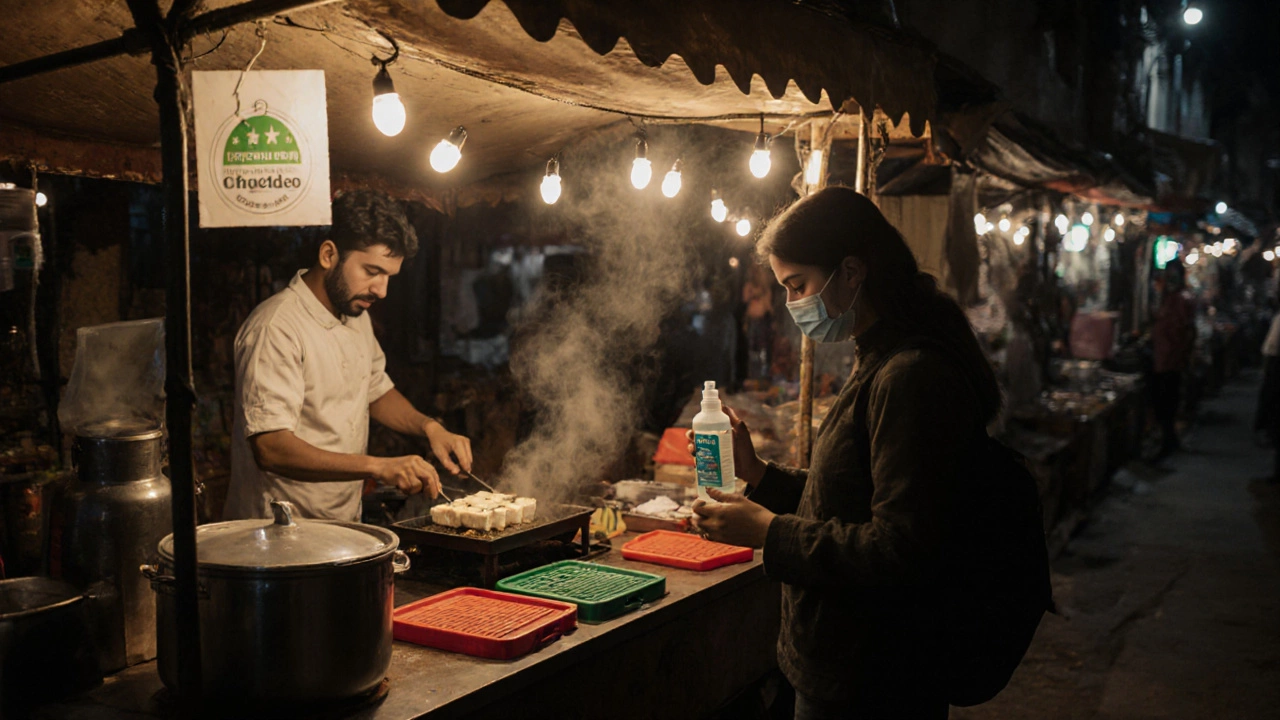
High‑Risk vs Safer Street Foods
| Food Item (Risky) | Typical Contamination | Safer Alternative |
|---|---|---|
| Raw Sprouts | E. coli, Salmonella | Cooked dal or roasted chana |
| Street‑made Lassi | Listeria, unpasteurized milk | Bottled pasteurized yogurt drink |
| Ice Cubes | Tap‑water pathogens | Shaken drinks with boiled water |
| Fried Snacks in Re‑used Oil | Cross‑contamination, harmful compounds | Freshly fried items in clean oil |
| Uncooked Seafood Salad | Vibrio, parasites | Grilled or well‑cooked seafood |
Quick Checklist Before You Bite
- Is the water source boiled or filtered?
- Is the food cooked in front of me, served hot?
- Does the stall display an FSSAI or hygiene rating?
- Am I using my own hand sanitizer before eating?
- Do I have a backup plan (bottled water, packaged snacks) if the stall looks questionable?
Frequently Asked Questions
Can I safely eat street food in India?
Yes, if you choose stalls with visible hygiene signs, drink bottled water, and avoid the high‑risk items listed above. Most travelers enjoy safe street food by following these simple rules.
What should I do if I get food poisoning?
Stay hydrated with oral rehydration salts, avoid solid foods for a few hours, and use over‑the‑counter antidiarrheal medication. If symptoms persist more than 24 hours or include fever, seek medical attention at a reputable clinic.
Is bottled water always safe?
Buy sealed bottles from reputable brands and check that the seal is intact. Avoid refilling bottles from tap sources.
Are there regional differences in food safety?
Northern metros like Delhi and Mumbai tend to have stricter inspections, while smaller towns may rely more on word‑of‑mouth recommendations. Always apply the same safety checklist regardless of region.
Can I eat dairy products from street vendors?
Avoid unpasteurized milk, lassi, or paneer from unknown sources. Stick to packaged dairy or buy from well‑known dairy chains.
